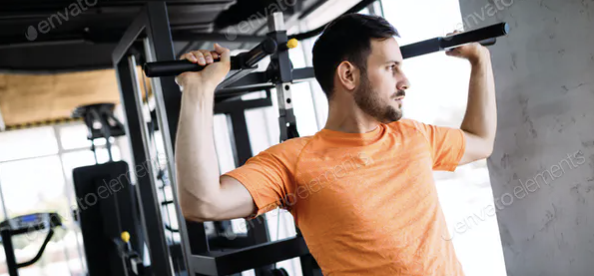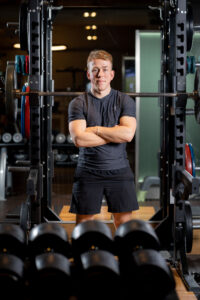After a wet and cold winter and spring, we now head into summer with a rise in temperatures, which brings with it challenges as well as happiness for those who enjoy warmer weather. Many people find working out even tougher than training in colder weather, and this can often mean that consistency is difficult to achieve.
Training in warmer temperatures can put more stress on your body, and increases the risk of a serious illness, if precautions are not taken. The combination of exercise itself and a hotter, more humid climate can increase your core body temperature, which leads to your body sending more blood to circulate through your skin in order to cool itself. As a result, there is less blood for your muscles, which then increases your heart rate. High humidity levels also adds more stress on your body because it is not easy for sweat to evaporate from your skin to cool your body. Consequently, your body temperature increases.
Normally, your skin, blood vessels and perspiration level adjust to the heat. However, if you are exposed to high temperatures and humidity for too long, you sweat heavily, and don’t drink enough fluids, these systems may fail.
So, what precuations do you need to take? How can you make sure that training and exercise is safe and consistent when the temperatures rise?
Hydrate Regularly
The first key area to focus on is hydration. Getting enough water throughout the day is a huge determining factor in how your body will function, both in terms of health and fitness. Your body is 60% water, so it is vital that you stay hydrated so that you sweat and cool down easily. In addition, this will allow important nutrients to flow through to important body parts, flush toxins out of your body, help deliver oxygen all over the body, allow your body’s cells to grow, reproduce and survive, and act as a ‘shock absorber’ for you brain and spinal cord.
When it comes to training, water plays a big role because you will lose plenty of it through sweat during your sessions. So, you need to make sure that you have a water bottle with you when you train, not just so you can maintain a high level of intensity and quality, but also to avoid any health risks that come with dehydration, such as exhaustion, nausea, fainting, and dizziness. Drinking plenty of water also boosts your metabolism, the chemical process inside your body that turns food into energy, which is vital for efficient fat burning if this is your goal throughout the summer.
Wear Light, Breathable Clothing

When you train in rising temperatures, sweat is going to be an issue for most people. What you wear to your sessions will be important, not only to your performance but also to the comfort and enjoyment of your sessions. If you wear a regular t-shirt that has heavy fabric and is not suited for warmer temperatures, you are more than likely going to feel heavy and tired during your sessions, which can affect the quality of your output, as well as how long you can last for in the gym.
So, make sure you wear light, breathable clothing during your sessions – many fitness brands, such as Nike, Adidas and Under Armour produce excellent clothing for warmer weather and this can help you feel sharper and more comfortable when the sweat inevitably builds up. You should also bring a towel and/or a headband if sweat around your head is a common occurrence. Coming prepared with adequate clothing and equipment is vital for training in the heat.
Know Your Limits
Training in the heat is likely to be more demanding on your body, so it is vital that you know how much your body can withstand, before applying it into your session. Based on your previous training experience, you should have a good idea of your body’s capability, but if you don’t, hiring a coach or having someone to give you an assessment will give you a much better idea. If you feel exhausted, nauseous, or even ill during your training session, then stop – you do not want to run the risk of fainting or suffering heatstroke. Do what you can and still push yourself hard, but do not go over your limits in hot weather.
This also links in well with what you should be fitting into your session if you can only withstand the heat for a certain period of time. This will of course depend on the individual, their experience, timeframe, and surroundings. If you are a beginner, performing isolation exercises where you focus on improving strength, stability, and muscle growth in specific areas will be most beneficial. If you are more experienced, aim to prioritise compound movements, where you will train multiple muscle groups at once and get more value for your shorter, more intense sessions. Know your limits, train hard, and be smart.
Rest and Recover Well

If you want to be able to train efficiently and regularly in rising temperatures, it is essential that you get plenty of sleep and recovery both before and after. Rest days are vital to your routine and something that should not be taken lightly. You do not need to train five to six times per week to make great progress, and doing so can in fact be damaging, especially in warmer temperatures. Two to four resistance training sessions are perfect for building up strength, adding muscle, and burning fat – anything more than that is not only unnecessary but also unsustainable and arduous. The process should be manageable, enjoyable, and effective – training too hard is going to lead to your body being exhausted and overworked.
A high-quality night’s sleep of 7-9 hours will also be crucial. This will give your body much-needed rest and recovery from your daily exercise and tasks, which is also crucial to training quality in the heat. If you are not sleeping well, you are more than likely going to feel tired throughout the day, which will affect your motivation to train and also the quality of your sessions if you do keep showing uo. So, make sure you prioritise rest and recovery so that you can train optimally in warmer temperatures.
Fuel Up with Good Nutrition
Another huge part of being able to train well in the heat will be your diet. This is vital, not only in achieving your goals, but also in fuelling your workouts and remaining full of energy throughout the day. If you are running on empty due to a lack of quality nutrition in your system, your strength levels will likely decrease and you will not be able to last long in the gym. It is vital that you have a diet that features a good balance that will give you plenty of energy, support muscle recovery and provide much-needed nutrients to the body.
Consuming plenty of protein and carbohydrates, in particular, is going to be important because it is going to be your primary source of energy throughout the day. Aim for carbohydrates that release energy slowly, such as oatmeal, rice, potatoes, pasta and bread, so that you avoid sharp spikes and dips in your blood sugar levels and that your energy levels remain consistent. Fruit is also a good, healthy option if you are looking for a sharper energy hit. Do not neglect carbohydrates from your diet, especially if you want to have balanced, high energy levels so that you can attack your resistance training sessions with maximum effort and intensity, which will be key in rising temperatures.
Summary
As the climate gets warmer in the UK and many other countries, training in the heat will be a challenge. However, it is possible to frequently train with quality, as long as you hydrate regularly, know your limits, wear light, breathable clothing, rest and recover well, and fuel up with good nutrition. Making sure you prioritise these points will help you stay on track with your training and make sure that the warmer temperatures do not get in the way of working towards your goals.
Photo Credit: Envato Elements


